winding axis vertical
Inadequately secured cable reel
 |
The wedges (a) have been correctly cut, namely in such a way that nails can be driven into the face grain. All in all, the small number of nails cannot apply sufficient shearing force to secure the cable reel with the wedges in the floor area. Additional measures would have been necessary.
The webbing belt (b) comes from a lashing reel fixed to the flatrack - it is tensioned on one side and is passed directly over the rough, sharp sawn edges of the reel boards without using edge protectors. There is a risk of fraying.
The two steel straps (c) have very low elasticity, roughly half of which has already been used up for pretensioning. Approx. 7.5 mm residual elasticity remains. The slightest jolt during transport would cause the steel strapping to cut into the wood and slacken. Since it is used as tie-down lashing, it can then no longer exert any securing force.
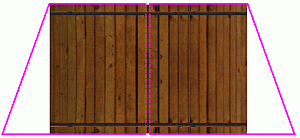 |
|
| Loop lashings through the eye - diagonal section |
The simplest option is to position the cable reel in such a way on squared lumber underlays that the eye and the path to the most favorable lashing points remain accessible, and then to secure it with four loop lashings through the eye.
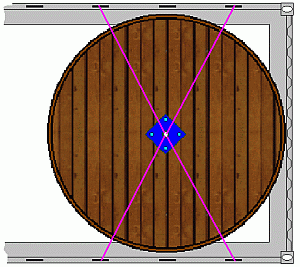 |
|
| Loop lashings through the eye - plan view |
If the eye is inaccessible or it is too difficult to pass lashing means through the eye, securing using obliquely applied loop lashings at the end wall and the two sides is possible.
 |
|
| Securing by loop lashings |
The blue loop lashings hold the reel firmly against the end wall and at the same time secure it on the left. The pink loop lashings secure it against movement to one side (upwards in the Figure) and the purple loop lashings secure it against movement to the other side (downwards in the Figure).
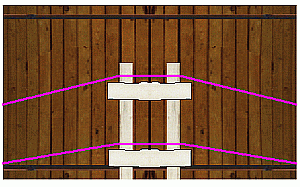 |
|
| Notched squared lumber holds the loop lashings firm against slippage |
The loop lashings may be held firm by notched squared lumber, which is made into a lattice using board ends and positioned in front of the reel. Whether additional securing against tipping has to be applied depends on the diameter:height ratio of the cable reel.
Three cable reels on a 20' platform
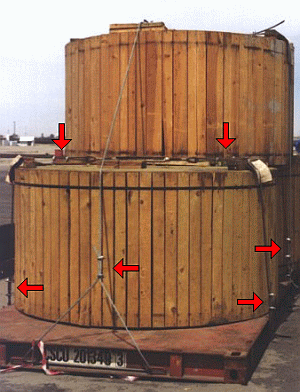 |
|
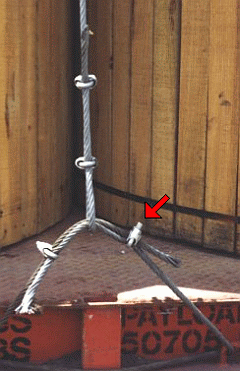 Inadequately secured cable reels on a platform |
The cable reels cannot be held secure by the longitudinally and transversely tensioned tie-down lashings. Moreover, the wire rope lashings have been applied in nonuniform manner. Too few wire clips have been used and some of them have been applied contrary to the rules of application.
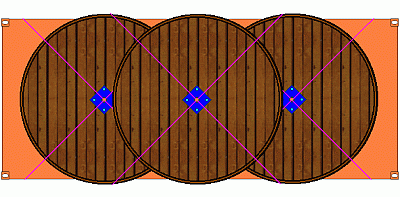 |
|
| Cable reels each secured with four loop lashings through the eye |
The cable reels can easily be secured with four loop lashings through the eye per reel. The number and orientation of the lumber members laid beneath and between the reels should be such that the cable reels are not subject to any harmful pressures and at the same time application of the lashing means is not prevented.